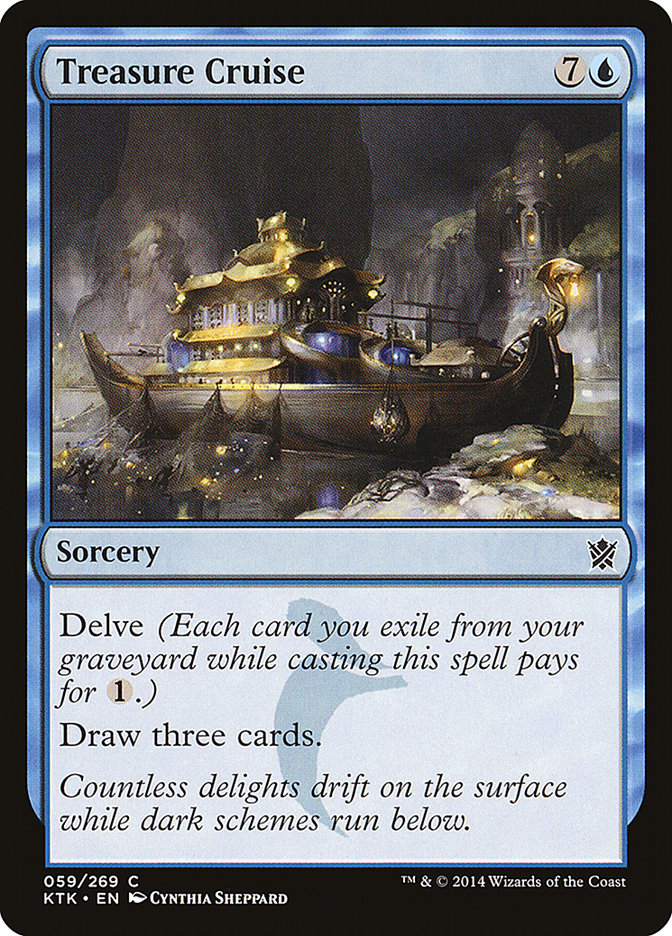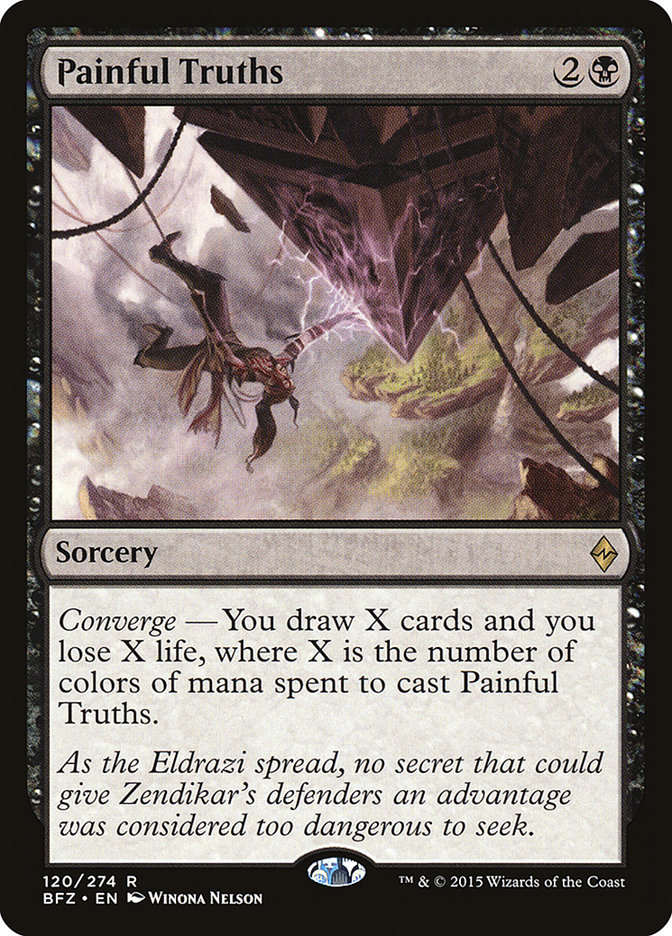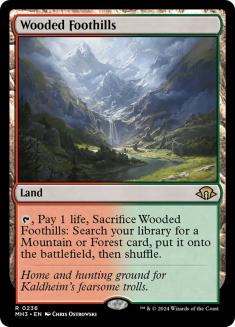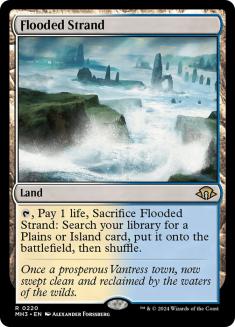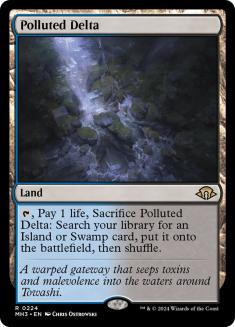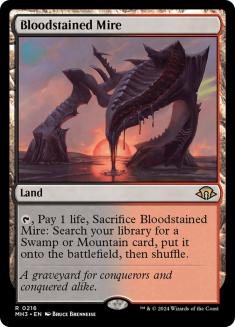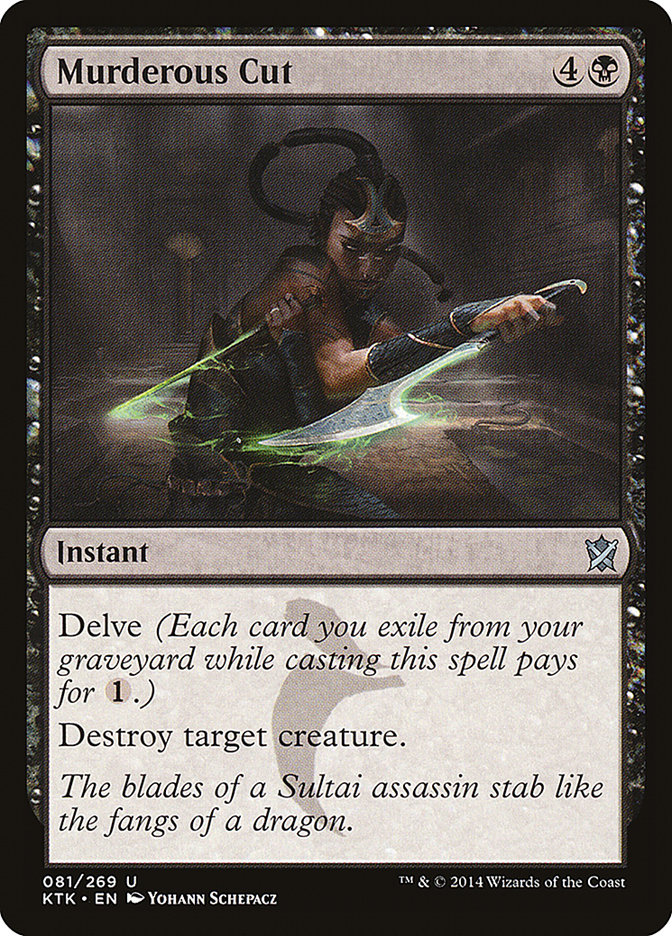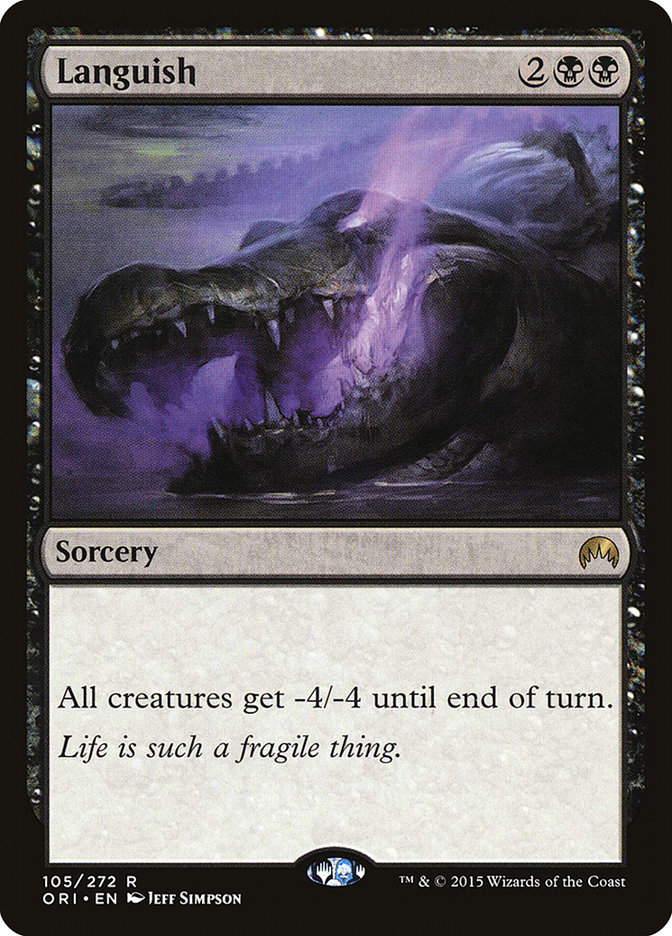Maybe you picked Siege Rhino. The ol’ Moocow has definitely made its presence felt over the past year and a half. It has stats that dominate whatever battlefield it enters, a powerful trigger that provides a card’s worth of value even if removed immediately, and increasing returns when drawn in multiple copies.
Maybe you are more of a fan of the latest incarnation of everyone’s favorite planeswalker. Jace, Vryn’s Prodigy has a mana cost that requires very little commitment and provides the potential for a game-winning card advantage engine.
Perhaps you feel that the card draw in Standard is the best thing going on. Dig Through Time and Treasure Cruise are banned in Modern and Legacy! If they’re too good for formats with much deeper card pools, then surely they should be dominating the much weaker Standard.
Maybe you feel that the fetchlands are the best cards in Standard. The mana in this standard format is some of the strongest we’ve seen since the days of Vivid lands and Reflecting Pool, thanks to the powerful synergy between the fetchlands and the Battle lands. Each fetchland allows us access four different colors of mana in Standard, an incredibly good deal for a small format.
Perhaps you are a fan of the new kid on the block, Reflector Mage. Standard is all about maintaining a tempo advantage, and returning a creature to your opponent’s hand for two whole turns is about as big of a tempo swing as you’re going to get.
All of these cards are very strong and help shape this Standard into one of the most enjoyable formats I have played in years, but if you were to ask me, I wouldn’t pick any of these cards.
There are two cards in Standard that I think vie for the title of “best card in the format”.
Unless you’ve been living under a rock these last couple months, the first card probably will not come as much of a surprise.
Collected Company has been tearing through Standard lately and for good reason. It is the most powerful card in Four-Color Rally, the consensus “deck to beat” of the format. It also is the centerpiece of multiple excellent aggressive decks in Standard like this.
Creatures (25)
- 1 Warden of the First Tree
- 4 Den Protector
- 4 Deathmist Raptor
- 4 Jace, Vryn's Prodigy
- 4 Bounding Krasis
- 4 Reflector Mage
- 4 Sylvan Advocate
Lands (25)
Spells (10)
Sideboard

My second candidate for the best card in Standard may come as a surprise to many of you. It’s quietly been doing excellent work in Standard for the past year and a half, and while it won’t win nearly as many games on its own as some of the cards listed above, it is one of the best role-players I’ve seen printed in years.
“Murderous Cut? A crummy removal spell? The best card in Standard? Chris, I think you might have finally lost it. I mean, removal is great and everything, but Jace, Rhino, Dig, etc.”
Bear with me for a second here.
I feel that Murderous Cut and Collected Company are the best cards in Standard because they let you do two things in one turn more quickly than any other cards in the format, and the trick to Standard, and often Magic in general, is being the first person to do two things at once.
Picture, if you will, the way a typical game of Magic plays out.
Each game typically has a proactive player and a reactive player. This can be determined by the die roll, the opening hands of the players, the matchup, or something else. The proactive player begins the game by producing a threat. The reactive player then produces an answer to that threat. This could be in the form of a blocker, a counterspell, a removal spell.
Players take turns producing threats and answering the threats of the opponent until one of two things happens. The proactive player produces a threat that can’t be answered, or the reactive player takes the initiative from the proactive player. Oftentimes this is referred to as “turning the corner.”
If we are the proactive player, our goal is to create an unanswerable threat and prevent them from turning the corner. This can be done by killing all of our opponent’s blockers, by overloading our opponent with a swarm of creatures, or by deploying a threat so big that our opponent doesn’t have an answer.
As the reactive player, we are trying to stay alive, turn the corner, and then maintain that lead by ending the game quickly, or else snowballing our lead into an insurmountable resource advantage and winning at our leisure.
Interestingly, the best way to turn the corner is also the best way to cement a lead in a game of Magic: do two things in one turn before your opponent can.
As the reactive player, if we can do two things in one turn, it could allow us to go from needing to answer one threat of our opponent’s to our opponent needing to answer one threat of ours. It could also shift the landscape from our opponent having multiple threats to us answering multiple threats in one turn.
Sweepers are another great way to do two things in one turn.
As the proactive player, doing two things in one turn will take a game that is at parity to one where our opponent must answer two things on the board. If our opponent can only answer one of those things, the game will soon spiral out of control.
Collected Company is a perfect example of doing two things in one turn. For the low cost of four mana and one card, we get to deploy two threats at instant speed. This can change a board at parity into one where we are up two threats. It can also change a board where we are down one threat into one where we are up one threat via surprise blockers. Though the card can feel a bit random at times, it is abundantly clear how strong a card like Collected Company can be.
Murderous Cut is a little different. It only does one thing, but it does that one thing very well and very cheaply.
You can usually make Murderous Cut cost one mana by about turn 4 or 5 just by playing Magic. This is especially true in a format loaded to the brim with fetchlands. For the price of one mana and one card, we get to kill a creature.
Any creature we want.
Doesn’t matter how expensive.
That kind of rate is unheard-of for removal in this day and age, and for good reason. We get to trade our one-mana card for their four-mana or even more expensive card with relative ease. That creates a huge tempo advantage that we will capitalize on by, you guessed it, doing two things in one turn. We quickly get to pair our Murderous Cut with any of the other powerful Magic cards mentioned at the beginning of this article.
Answer their threat and deploy a threat in the same turn. That is the bread and butter of Magic, and that is why Murderous Cut is, in my opinion, the best removal spell since Path to Exile.
Murderous Cut, I will be sad to see you go in a few months. We’ve had a lot of good times together, and you don’t get nearly the amount of credit you deserve.
Until next time, make sure you’re the player doing two things in one turn first.





